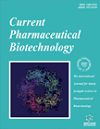
Full text loading...
Cancer is a complex disease characterized by the uncontrolled and unregulated growth of cells followed by invasion and proliferation from the site of origin to other sites of the body. Conventional chemotherapy largely kills rapidly expanding and dividing cancer cells by impairing DNA synthesis and mitosis. It is associated with various types of adverse effects ranging from simple nausea and appetite loss to serious ones like bone marrow depression and compromised immunity etc., due to their non-selectivity and inability to differentiate. The ideal feature of a delivery system is delivering the drug to the target place to achieve the most therapeutic impact while having the least toxicity. With the advent of novel drug delivery systems, it has been easier to deliver the drug to the target site. Utilizing new techniques and technology makes it a feasible approach to target cancer cells. Nanoemulsions are isotropic mixtures of transparent or translucent oil globules dispersed in an aqueous phase that is kinetically stable and supported by an interfacial coating of surfactant and co-surfactant molecules with droplet sizes in the nanometre range. Nanoemulsions are the delivery system of choice in case of cancer because of certain key attributes, including biodegradability, biocompatibility, large surface area non-immunogenicity, and release behavior control. At the same time, nanoemulsions have been engineered for various reasons, including enhanced biological half-life, target-specific binding ability, and imaging capability at different therapy levels by modifying the characteristics of nanoemulsions. This review focuses on current cancer treatment challenges and the role of nanoemulsions in treating cancer with their production methods, characterization methods, application, and quality attributes, which would help them make it to the clinics where cancer treatment is going on.

Article metrics loading...

Full text loading...
References


Data & Media loading...

